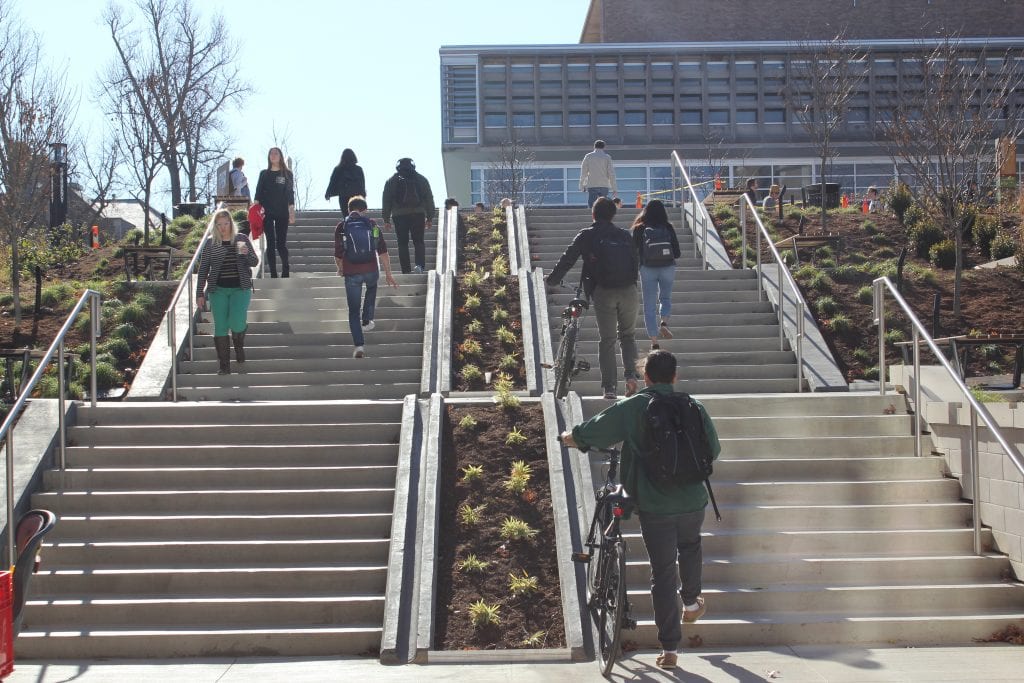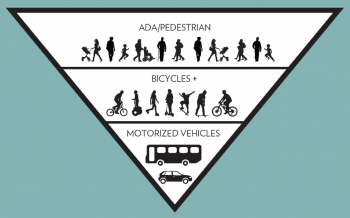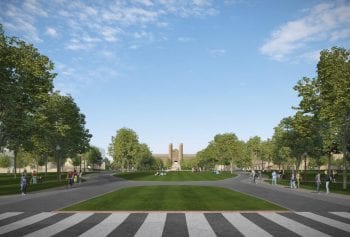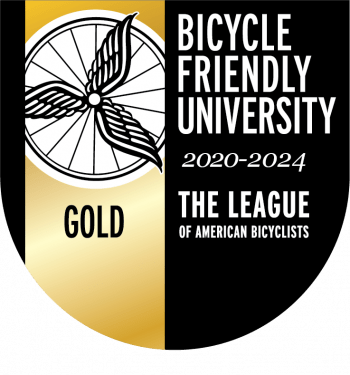 Washington University, traditionally a pedestrian campus, is now in the process of reorienting its infrastructure to accommodate users of all modal groups.
Washington University, traditionally a pedestrian campus, is now in the process of reorienting its infrastructure to accommodate users of all modal groups.
The Mobility Plan: A Vision for Transportation at WashU

The Mobility Survey conducted in fall of 2015 aimed to capture the daily life of the WashU campuses, exploring the way the community moves around and between campuses, the kinds of experiences users have, how they behave, and what mobility conflicts they experience. The results helped the university identify areas in which it could be providing more support to bikers, pedestrians, and motorists, giving rise to the Mobility Framework, a long-term planning document that guides WashU’s efforts to strategically and incrementally improve its mobility infrastructure. A set of new Legibility Guidelines was published alongside the Framework, providing a consistent standard for the design of all future mobility infrastructure, including path markings, signage, and materials. The Mobility Plan has not only created a precedent for planning at WashU but has extended to influence the surrounding municipalities, as the Legibility Guidelines are being followed for projects connecting WashU’s campuses to bordering neighborhoods.
WashU’s Complete Streets
WashU aspires to design roadways that are safe and accessible to all users, regardless of age, ability, and mode of transportation. A partnership with Great Rivers Greenway connected Washington University to the Centennial Greenway, a 20-mile biking and pedestrian trail that stretches throughout the St. Louis region. The Centennial Greenway section on the Danforth Campus will be completed in 2019 with the conversion of the Forest Park Parkway Overpass and the path which connects it to Forsyth Blvd to separated shared-use paths. WashU’s partnership with Great Rivers Greenway is also a driving force in the planning of the upcoming Chouteau Greenway, which will run through the City’s central corridor.
Furthermore, to ensure safe access to campus, perimeter streets are designed to accommodate all road users. Bicyclists and pedestrians benefit from separated paths on Forsyth, Big Bend and Wydown, and soon on Throop Drive. Campus biking nodes like Olin Library feature dozens of bike racks to account for increased demand in high-traffic areas.
The East End Transformation: A Connected Campus

The East End Transformation began construction in May 2017, and makes up a significant part of WashU’s long-term Mobility Plan. Representing the re-prioritization of bicycles and pedestrians on the East End of the campus, the project involves moving 1,000 surface parking spots underground, an overhaul that will return previously car-dominated space to bikes and pedestrians. To offset the reduction of parking spaces, the design provides additional bike networks, connections, and bike parking facilities, and a Bike Hub as part of the Shnuck Pavilion.
Bicycle-Friendly University Certification

In early 2021, WashU was certified as a Bicycle Friendly University at the Gold level. The Bicycle Friendly University program through the League of American Bicyclists recognizes institutions of higher education for promoting and providing a more bike-able campus for students, staff and visitors. WashU’s Gold designation comes three years after its 2017 Silver designation, representing the university’s recent hard work in designing campus infrastructure and bike programs for the League’s “5 E’s”: Engineering, Education, Encouragement, Enforcement, and Evaluation & Planning. By following the League’s recommendations for improvements in these five goal areas in the university’s long-term planning, WashU aims to continue to make moving around its campuses comfortable for users of all modal groups.